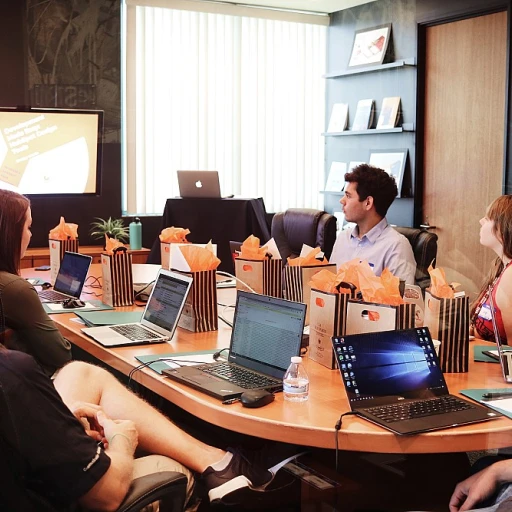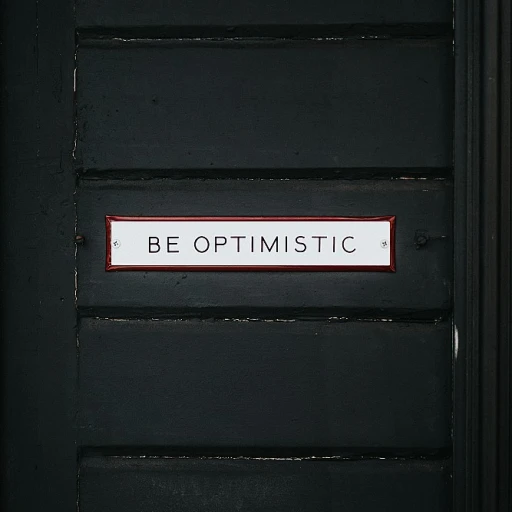
Understanding Automated CV Screening
The Mechanics of Streamlining Candidate Evaluation
Automated CV screening is revolutionizing the way recruiters process job applications. In today's fast-paced recruitment landscape, manually sifting through hundreds of resumes can be both time-consuming and prone to human error. Automated systems, such as applicant tracking systems (ATS), have emerged as powerful tools to enhance the candidate selection process. At the core of automated CV screening is sophisticated screening software that employs artificial intelligence and machine learning technologies. These tools are designed to efficiently evaluate resumes, matching candidate skills and experience with job descriptions' requirements. Such an automated approach not only accelerates the screening process but also enhances the best talent acquisition efforts by filtering out less qualified candidates. However, the essence of screening extends beyond merely parsing resumes. The utilization of these tools transforms the job of recruiters, allowing them to focus on more strategic elements of the hiring process. With the integration of ATS, recruiters can ensure a more consistent and unbiased evaluation process, significantly improving the overall recruitment strategy. Moreover, automated resume screening streamlines the recruitment process while providing a superior candidate experience. Candidates benefit from a process that is transparent and efficient, as their applications are systematically assessed against job requirements without delay. This not only optimizes the candidate sourcing process but also enhances the perception of the employer brand among potential hires. The implementation of automated tools demands an understanding of the technological innovations that have fueled their development. Leveraging these advancements effectively requires recruiters to continually update their knowledge base and adapt to tools that best serve their organization's needs. For those looking to further bolster their recruitment efforts, consider exploring how Hinterview and Bullhorn integration can optimize your hiring strategy with enhanced candidate insights and interactions.Benefits of Automated CV Screening
Streamlining the Recruitment Process
Automated CV screening is revolutionizing the recruitment landscape by significantly enhancing the efficiency of the hiring process. By leveraging advanced screening tools, recruiters can sift through vast volumes of resumes in a fraction of the time it would take manually. This not only speeds up the recruitment process but also allows recruiters to focus on more strategic tasks.
Improving Candidate Matching
One of the standout benefits of automated resume screening is its ability to improve candidate-job matching. Screening software, often powered by artificial intelligence and machine learning, can analyze resumes against job descriptions to identify the best candidates based on skills and experience. This ensures that the most qualified candidates are shortlisted, enhancing the overall quality of hires.
Enhancing Candidate Experience
With automated systems, candidates experience a more streamlined and efficient application process. Automated screening tools can provide immediate feedback, keeping candidates informed about their application status. This improves the candidate experience, which is crucial in a competitive job market where top talent has multiple options.
Reducing Bias in Recruitment
Automated screening tools can help reduce unconscious bias in the recruitment process. By focusing solely on the qualifications and skills outlined in resumes, these tools minimize the influence of subjective factors that can affect manual screening. This leads to a more diverse and inclusive hiring process.
Cost-Effectiveness
Implementing automated resume screening can lead to significant cost savings for organizations. By reducing the time spent on manual screening and improving the efficiency of the recruitment process, companies can allocate resources more effectively. This cost-effectiveness is a compelling reason for many organizations to adopt automated screening solutions.
For more insights into how automated systems are transforming recruitment, you can explore navigating the world of polymer applicant tracking systems.
Challenges in Implementing Automated CV Screening
Working Through the Complexities of Automated CV Screening
Automated resume screening is reshaping the recruitment process by allowing recruiters to streamline tasks that were once conducted manually. Despite its many advantages, the implementation of automated systems in screening resumes presents various challenges that cannot be overlooked. Firstly, a significant hurdle that organizations face is the integration of automated screening tools with existing applicant tracking systems (ATS). Companies typically have well-established ATS that help facilitate job applications, and ensuring that new software tools work seamlessly with these systems is vital to maintain efficacy in the hiring process. In addition, while automated screening software can swiftly sift through large volumes of candidates, it's essential that these tools are accurately aligned with the job description and candidate requirements. Mismatches can occur if the automated system is not properly configured, which could result in suitable candidates being overlooked or rejected, thus negatively affecting the candidate experience. Bias in automated resume screening is another critical concern. Even the best tools leveraging artificial intelligence can inadvertently incorporate biases if not properly designed and monitored. This challenge underscores the need for regular audits and updates to ensure that the screening process remains fair and objective. Moreover, the use of automated screening tools demands a balance between technology and human insight. While these tools excel at identifying candidates with the right skills and experience on paper, human recruiters offer nuance and understanding into qualities that software might miss, such as cultural fit and soft skills. Finally, implementing automated systems requires careful consideration of data privacy and legal compliance. Organizations must ensure that the introduction of technology adheres to privacy regulations to protect candidate information during the recruitment process. In summary, while the incorporation of resume screening automation promises improved efficiency and reduced time in the hiring process, it is vital to navigate these challenges with caution. A human-centric approach combined with technological innovation is essential to mastering the intricacies of automated resume screening in modern recruitment practices. For more insights into how AI is revolutionizing candidate sourcing in recruitment, you may explore further in AI Revolutionizing Candidate Sourcing.Integrating Automated CV Screening with Human Insight
Bridging the Gap Between Automation and Human Insight
While automated CV screening has revolutionized the recruitment landscape by significantly reducing the time and effort required in the resume screening process, it is crucial to remember the human element that underpins effective hiring. Candidates are not just a set of keywords and job requirements; they bring unique experiences, skills, and potential to the table. To ensure an efficient and fair hiring process, integrating human insight with automated systems becomes imperative.
Automated screening software, such as applicant tracking systems (ATS) and other advanced resume screening tools, excel at analyzing large volumes of resumes quickly to short-list candidates who align with the specified job description. However, technology sometimes overlooks intangible qualities, cultural fit, and potential, which a skilled recruiter might detect.
Leveraging both technologies and human judgment can create a more holistic screening process, fostering a better candidate experience. By combining automated resume screening tools with manual inspection by experienced recruiters, companies can ensure they don't miss potentially excellent candidates who may not have the perfect keywords but possess the right skills and attitudes for the job.
- Enhanced Screening Process: Recruiters can refine and validate the shortlist generated by automated systems, ensuring that candidates meet not only the technical but also the cultural and experiential job requirements.
- Improved Candidate Experience: Candidates are more likely to feel valued and understood when human judgment is part of the recruitment process, reducing the risk of them feeling like mere data points processed by automated tools.
- Balanced Decision-Making: A balanced approach involving both machines and humans can lead to more informed and inclusive hiring decisions, ultimately benefiting the recruitment process.
Incorporating machine learning in screening tools elevates the process by allowing these systems to learn and adapt over time. However, it is the human input that provides context and nuance, leading to the best outcome for both recruiters and candidates. This synergy of technology and human expertise defines the future of candidate sourcing, setting new standards in the hiring process.
Technological Innovations in CV Screening
Leveraging Cutting-Edge Technology in CV Screening
In the rapidly evolving landscape of recruitment, technological advancements are pivotal in transforming the CV screening process. Automated tools and software now play an integral role in swiftly sifting through resumes, allowing recruiters to focus more on strategic tasks. Artificial intelligence (AI) and machine learning are two key technologies that have revolutionized automated resume screening. These systems can efficiently analyze vast amounts of data, identify relevant job skills, and match candidate resumes with job requirements, reducing the manual screening burden considerably. AI-powered recruitment tools offer an improved candidate experience by quickly recognizing top candidates whose qualifications align with the job description. Applicant tracking systems (ATS) are another technological innovation enhancing the screening process. They streamline the recruitment process by organizing applicant data and enabling recruiters to track candidates through different stages of the hiring process efficiently. ATS tools also integrate seamlessly with other recruitment software, further optimizing the candidate screening process. Moreover, the use of advanced screening software that employs natural language processing can better understand and interpret the nuances in resumes. This technology helps to extract valuable information accurately, ensuring that only the best candidates are presented to the recruiters. Despite these technological advancements, integrating automated systems with human insight remains crucial. While machines handle the vast data efficiently, recruiters still need to interpret results based on the context and culture of the hiring organization. With an ongoing commitment to innovation, the future of candidate sourcing is set to become even more automated, making the hiring process more efficient and less time-consuming. As technology continues to advance, staying informed about the latest tools and techniques will be essential for recruiters aiming to maintain a competitive edge in the fast-paced job market.Future Trends in Candidate Sourcing
Emerging Trends That Could Shape Talent Acquisition
The future of candidate sourcing continues to evolve, especially with advances in technology that reshape the recruitment process. These developments offer a glimpse into how the industry may adapt to the ever-changing landscape of hiring.- AI-Powered Screening Tools: Artificial intelligence remains at the forefront of innovation in recruitment. Automated resume screening software is increasingly using machine learning algorithms to identify candidates whose skills best match job requirements. These tools can process vast amounts of resumes in a fraction of the time compared to manual screening, offering both efficiency and precision.
- Integration of Human Insight with Technology: While automated systems significantly enhance screening, integrating human insights remains vital in the recruitment process. HR professionals might combine the strengths of applicant tracking systems with personal assessments to create a more holistic candidate evaluation, enhancing the candidate experience.
- Enhanced Applicant Tracking Systems: Evolving ATS solutions now offer more than just resume screening. They are becoming comprehensive platforms that manage the entire recruitment process. Innovations in tracking systems include features that help recruiters streamline the hiring process and improve the overall experience for candidates.
- Personalization through Data Analytics: Recruitment processes can now utilize advanced analytics to tailor job descriptions and screening processes, ensuring they resonate with the targeted talent pool. Personalization helps in drawing candidates whose skills and experiences align closely with the company's needs.
- Growth of On-Demand Recruitment Tools: The demand for flexible recruitment solutions is increasing. Screening tools that offer on-demand capabilities allow organizations to scale their hiring processes quickly, meeting the fluctuating needs of the business environment.
- Emphasis on Skill-Based Assessments: As the workforce evolves, there's a growing shift towards skills rather than traditional qualification metrics. Some screening software now incorporates skill-based tests to better match candidates to roles based on practical ability.











